How To Use Excel: A Beginner’s Guide
If you’re a complete beginner when it comes to Microsoft Excel, then you’ve come to the right place to get started and learn how to use it. This free beginner’s guide will help you to understand the basics of Excel and provide you with practical examples and tips. If you don’t know what a VLOOKUP is or what a SUMIF does, don’t worry, by the end of this guide, you’ll have a clearer idea of what they are and what they can do for you.
Keep in mind that this guide can also be applied to Google Sheets, which is a very similar spreadsheet program that is available to anyone with a Google account.
You may be thinking that Excel looks complicated, boring and perhaps unnecessary. But it can be less complicated if you focus on certain tasks and understand how Excel can help you. As for being boring and unnecessary, well we won’t lie. Unless you’re working on something you love or find interesting, it is likely that spreadsheets relating to that work aren’t going to be the highlight of your day, so yes it can be boring to use Excel.
Being unnecessary is something that depends on your judgement, however. Excel can be used for many things, but that doesn’t mean it has to be. If there is a more efficient way of doing things without using Excel, then it’s probably best you don’t use it. But in most cases, especially when lots of information is involved, it’s best to use Excel to calculate and present data and results.


This guide will start by explaining some of the benefits and value you can gain from using Excel, particularly as a job hunter or business owner. It will then cover some of the fundamentals of Excel that will get you started with using it.
Mục Lục
How Can Excel Benefit My Career or Business?
Excel has a lot of potential to develop your skills in more ways than it may appear. It can lend itself to your credentials by showing that you’re capable of handling, interpreting, and communicating data and ideas effectively. It can also be an immensely helpful tool when you’re a budding business owner, saving you the time and effort on trying to track data on paper.
Let’s look at how Excel can help you as a prospective employee or entrepreneur:
Excel For Job Hunters

Excel skills are a valued attribute on your CV or resume. Many employers will expect you to already have a decent understanding of how to use it and often during the interview process for a new job, employers will ask you to complete practical tests to assess your relevant knowledge and skills. Excel tests are commonly used as part of this process.
If you’re currently looking to update your CV or resume and are trying to identify what skills are in demand, it’s a good idea to check leading job sites like Indeed, Reed and LinkedIn to see what skills and qualifications they say employers are looking for. For example, Indeed produced an article which talks about the top 10 job skills for any industry.
“Having competitive job skills is an important part of developing your career. There are many qualities that are universally desired by employers regardless of their field. Especially if you are unsure about the career path you would like to pursue, it is important to develop skills that can transfer from one industry to another. This allows you to explore your job options freely while still creating a strong resume and performing well at work.”
“10 Top Job Skills for Any Industry: Transferable Skills You Need” – Indeed, 2020
More often than not, you will see certain skills repeatedly mentioned by most job sites and in many job adverts. Those skills are usually: Communication, Decision-Making, Multitasking and Organisation. Excel can help with all of these skills.
Communication
Whether you’re talking to customers or holding a meeting with colleagues, you need to be confident in what you’re saying. Excel can help by giving you the ability to record and monitor information, which can assist you when you’re advising customers. For example, Excel could tell you how many items are in stock and when the next delivery of a certain item is due. It can also help you when in meetings with colleagues, such as by providing you with accurate graphs and tables to clearly demonstrate how sales are performing that month.
Having information and data to back up what you are communicating is not to be underestimated and is certainly a good thing.
Decision-Making
Making a decision could be easy or it could be hard. It may be easy because you’ve been in the situation before and you made the right decision last time, or hard because the situation is new and complex. You can’t make a good decision without first understanding what is going on. In some cases, there isn’t the time or the data to sit down and work things out in Excel.
However, where there is time and where there is data available, Excel can play a big role in your decision making. Everyone has to base their decisions on something, be that past experience or information and data. Excel can be used to help you identify patterns and trends which can then form part of your decision-making process. Referencing accurate data and relevant evidence provides you with a solid argument when explaining the logic behind your decisions.
Multitasking and Organisation
We’ve grouped multitasking and organisation together here as they are similar in many ways. If you’re multitasking, you’re probably going to need to prioritise in what order your many tasks should be done and which of those tasks can be completed at the same time.
Organisation is not so different. Excel can help by giving you the ability to plan out and coordinate tasks, whilst also allowing you to assign each task attributes like value and time. Once all the tasks are detailed in your spreadsheet, you can easily order them by the tasks that are most or least valuable or by the tasks that will take the longest or shortest time to complete.


Back to Top
Excel For New Business Owners

The entrepreneurs amongst us who are starting their own business will definitely have a use for Excel in some way, shape or form. Working out your startup budget? Excel can help with that. Forecasting your sales figures for the coming months? Excel can help with that. Making a cup of coffee? Excel cannot help with that, sorry.
When running your own business, there are a lot of things to consider and keep track of. There are suppliers to negotiate with, schedules to maintain, customers to meet, rent and taxes and assorted bills to pay – all this and more is whirling around in the head of a business owner. Excel can assist with many of these.
Talks and negotiations with suppliers
If you’re talking with a lot of suppliers, Excel can be used to list what products a supplier offers and at what prices. Once you’ve met with all the suppliers, you can simply review the details you’ve kept in Excel to determine who offers what you need at the best price.
Budgets and finances
You can also use Excel to calculate budgets and keep track of income and expenses, to ensure your finances are in good shape. This will come in very handy when you have to submit quarterly and annual details to HMRC and Companies House, such as VAT returns, corporation tax, income tax self-assessment and confirmation statement.


Even if you plan to use an accountant, having a clear, up to date and accurate record of your company finances will certainly help you and them.
Customer ledger
As long as you’re operating legally and in accordance with data protection regulations – note that you’re highly likely to be storing personally identifiable information (PII) for this – you could use Excel to keep a customer ledger, so you can monitor which clients have paid you in full, which have paid a deposit and which are yet to make a payment.
Whatever your needs may be, Excel is sure to have a feature or two that enhance your business skills and make your life a little, or a lot, easier if used well.
Back to Top
How Can I Use Excel?
Think of Excel as a clever record keeper and calculator rolled into one.
First, let’s get you introduced to the basics of Excel: Cells, Columns, Rows, Worksheets/Tabs, Formulas and Charts/Graphs.
Cells
A Cell in Excel is an individual box within a Worksheet/Tab and is usually used to input and hold numeric or text data. Each Cell has a name, that name comes from the Column and Row the Cell sits on. If you’ve ever played the game Battleship, used grid references on a map or had allocated seat tickets for a train/aeroplane/venue, you’ll easily understand Cell names.

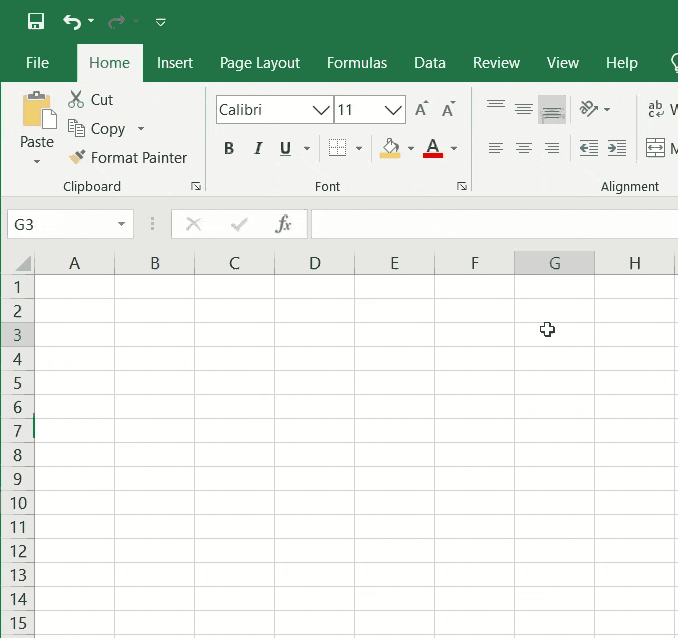
Here is an example: Columns run left to right along the top of the Worksheet/Tab and are labelled according to the alphabet. Rows run down along the left side of the Worksheet/Tab and are labelled numerically. So if you’re looking at a Cell which sits on Column A, Row 1, the Cell’s name will be A1.
Back to Top
Columns
Columns run left to right along the top of the Worksheet/Tab and are labelled according to the alphabet. Each Column is a vertical series of Cells.

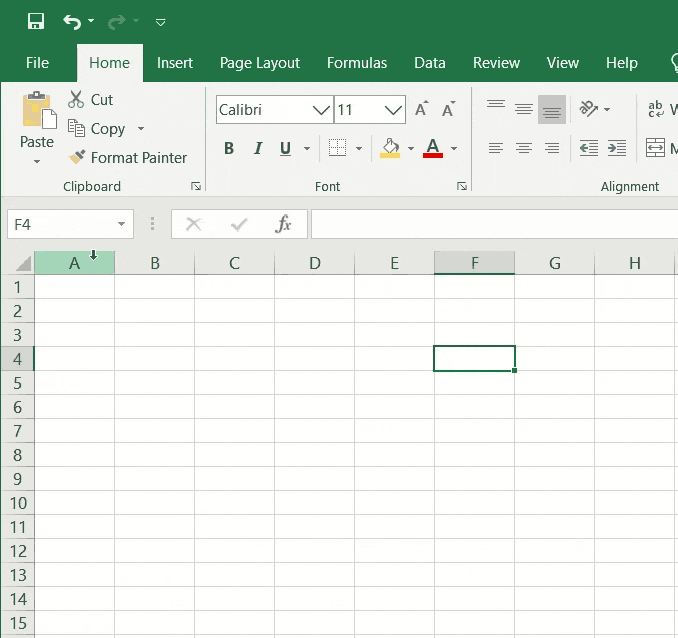
Back to Top
Rows
Rows are labelled along the left side of the Worksheet/Tab numerically and run down from top to bottom. Each Row is a horizontal series of Cells.

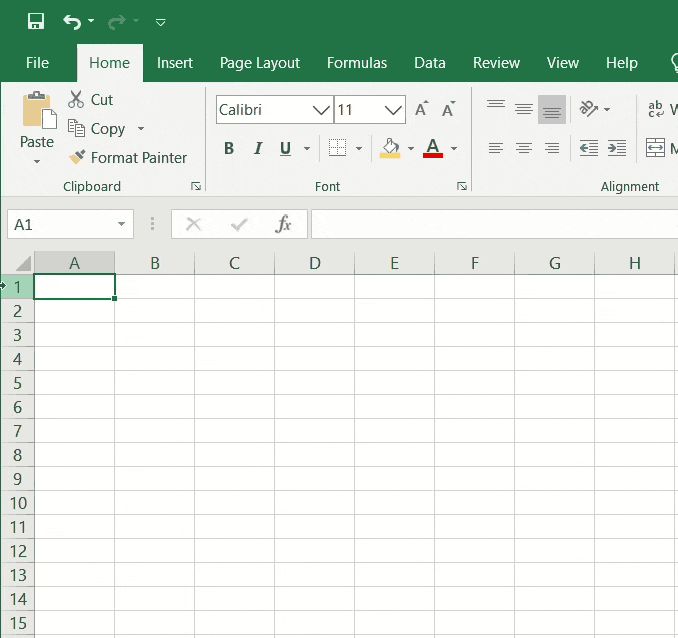
Back to Top
Worksheets/Tabs
Worksheets/Tabs are made up of Columns, Rows and Cells and are essentially pages of your Excel workbook. You can have multiple Worksheets/Tabs within your Excel workbook and they are a useful way to separate different types of data and information.

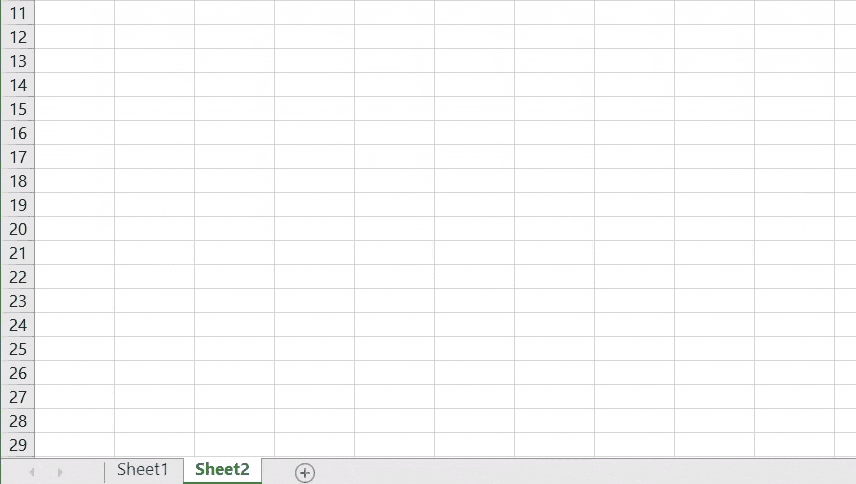
Unlike Columns, Rows and Cells, you can rename Worksheets/Tabs. By default, Worksheets/Tabs are named ‘Sheet1’, ‘Sheet2’ etc, but you can rename them and even colour code them if you wish by right-clicking on the Worksheet/Tab and selecting either ‘Rename’ or ‘Tab Color’.
Back to Top
Formulas
Excel Formulas can be used to either calculate the value of a single Cell or multiple Cells, as well as use Functions to calculate values or retrieve data.
Simple Formulas can calculate by adding, dividing, multiplying or subtracting values from other Cells. To add, you use the + symbol, to divide you use the / symbol, to multiply you use the * symbol and for subtracting you use the – symbol. For example, if you wanted to add together the values of three Cells to work out the total value, you could do this:

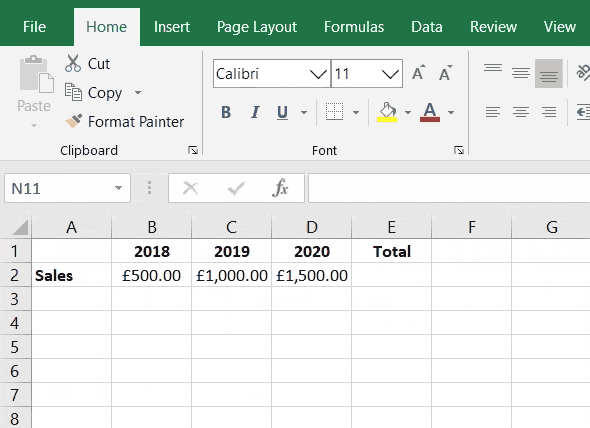
=B2+C2+D2
Here, you would select the first Cell and type the + symbol, then select the second Cell and type the + symbol again, and finally select the third Cell to create a Formula that adds together all three Cells and calculates their total value. This is not a problem if you are working with a handful of Cells, but if you’re dealing with a lot of them, it is much easier to use the SUM Function and highlight the Cells to achieve the same calculation of adding them all together, like this:

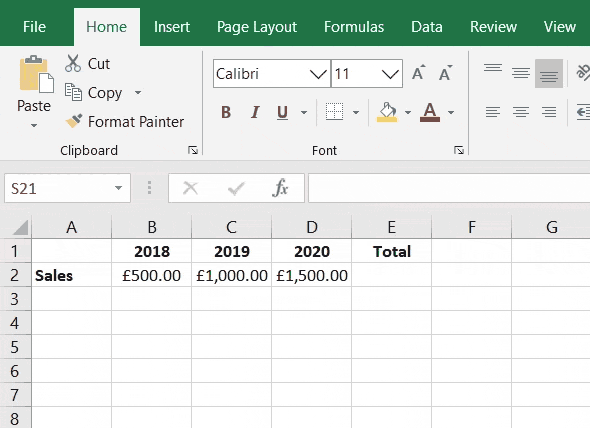
=SUM(B2:D2)
Using the SUM function to create a Formula can be a real timesaver when you’re working with a lot of data. In the example above, it shows how you can highlight multiple Cells in a Row; this also works if you need to highlight multiple Cells in a Column.
If you need to bring together data from multiple sources or from different parts of your spreadsheet, you can use Functions like a VLOOKUP, a SUMIF or a COUNTIF to retrieve certain information and/or give you an overall picture of the data you have.
Back to Top
VLOOKUP
For example, imagine you own a restaurant and you’ve got a long list of table reservations. The list contains customer contact details, party size, date the table is booked for and allergy/dietary requirements. However, you’ve forgotten to ask what time they will be arriving! Luckily, you’ve got email addresses for all of the customers, so one of your colleagues sends an email to each of them and makes another list that just has the customers’ email addresses and time of arrival. You can then quickly retrieve the times from your colleague’s list and store them alongside the correct customer in your original list by using a VLOOKUP, like this:

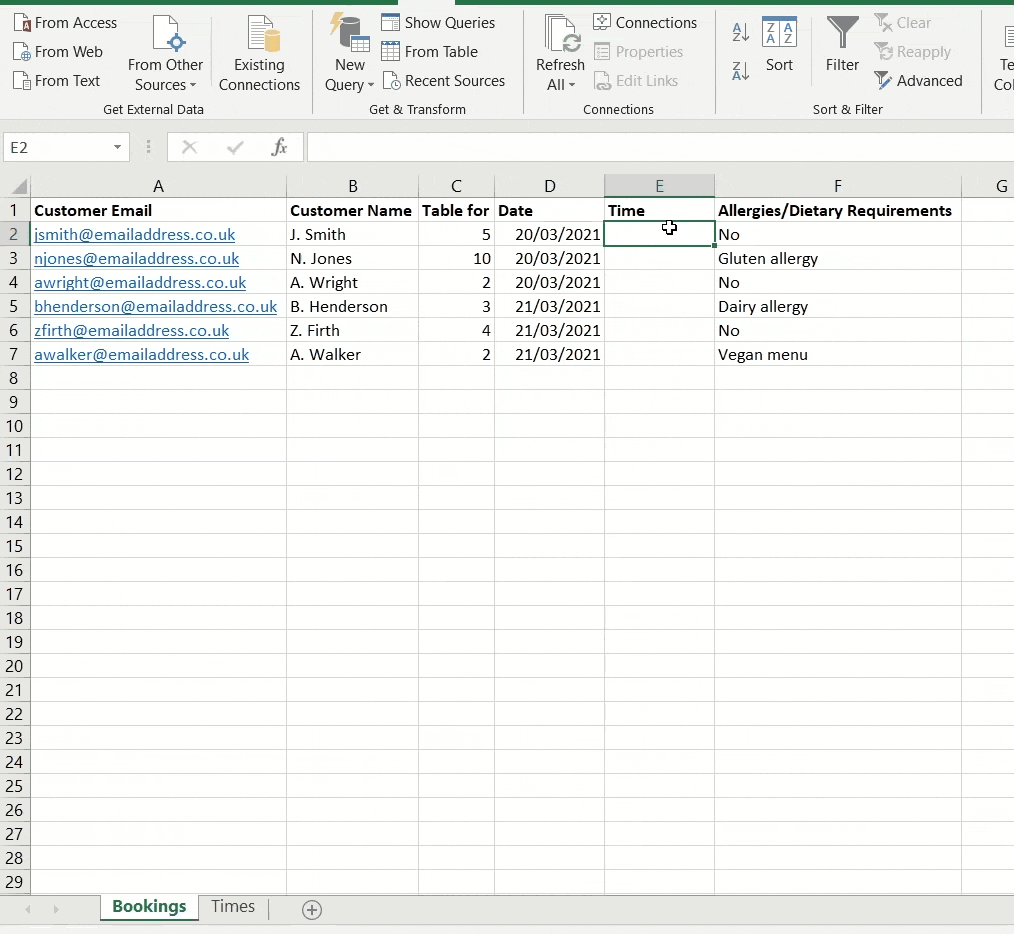
=VLOOKUP(A2,Times!A:B,2,FALSE)
So, what is this VLOOKUP doing? First, you have to ensure that there is a common identifier in both your lists. The common identifier must be identical in each list – in this case the common identifier is customer email addresses. The Column containing the common identifier needs to be located to the left of the data you want to retrieve.
So, we start off by writing =VLOOKUP( then select the ‘lookup_value’, which in this example will be the first email address in Cell A2, then type in a comma.
Your Formula should now look like this: =VLOOKUP(A2,
Next, you’ll need to go to the Worksheet/Tab that contains the other list (in this example, the Worksheet/Tab has been named ‘Times’) and select the ‘table_array’, which means highlighting the range of Columns starting with the Column containing the ‘lookup_value’ and continuing until you reach the Column containing the data you want to retrieve, then type in a comma. So for this example, in the ‘Times’ Worksheet/Tab, we’re selecting Columns A and B, Column A contains the ‘lookup_value’ and Column B contains the table reservation times.
Your Formula should now look like this: =VLOOKUP(A2,Times!A:B,
We’re almost finished…
Next, we need to type in the ‘col_index_num’ which just needs you to count along from the first Column in your ‘table_array’ until you get to the Column which contains the data you want to retrieve. In this example, the data we want is in the second Column in the ‘table_array’ so we just need to type 2, then a comma.
Your Formula should now look like this: =VLOOKUP(A2,Times!A:B,2,
Finally, we need to choose a ‘range_lookup’. There are two choices here: ‘TRUE’ or ‘FALSE’. ‘FALSE’ is usually the best option to choose as it means that the VLOOKUP will find the exact match to the ‘lookup_value’ you selected at the beginning of this Formula. Once you’ve selected or typed in ‘FALSE’, you can just hit Enter on your keyboard and the VLOOKUP will use the details you’ve selected and input, then go and find the data you wanted. Once it finds this, it’ll place it in your original Bookings list.
Your finished Formula should now look like this: =VLOOKUP(A2,Times!A:B,2,FALSE)
As shown in the image above, once you’ve written this VLOOKUP you can locate the Fill Handle in the bottom right corner of the Cell (in this example, the Cell is E2) and drag the handle down to the bottom of your list. The VLOOKUP Formula will change for each Cell and retrieve relevant data based on each customer email address.
This is just one example of how to use a VLOOKUP. There are many other applications and they don’t all need to be focused on email addresses. You might want to use order/invoice reference numbers or customer usernames instead.
Back to Top
SUMIF
There may come a time when you need to add up values in a particular Column, Row or specific Cells based on certain criteria. For example, imagine you own a restaurant and you have a list of all your bookings, the list contains customer contact details, party size, date and time the table is booked for and allergy/dietary requirements. Now, if you wanted to add up how many people are going to attend your restaurant on a certain day, you can use a SUMIF like this:

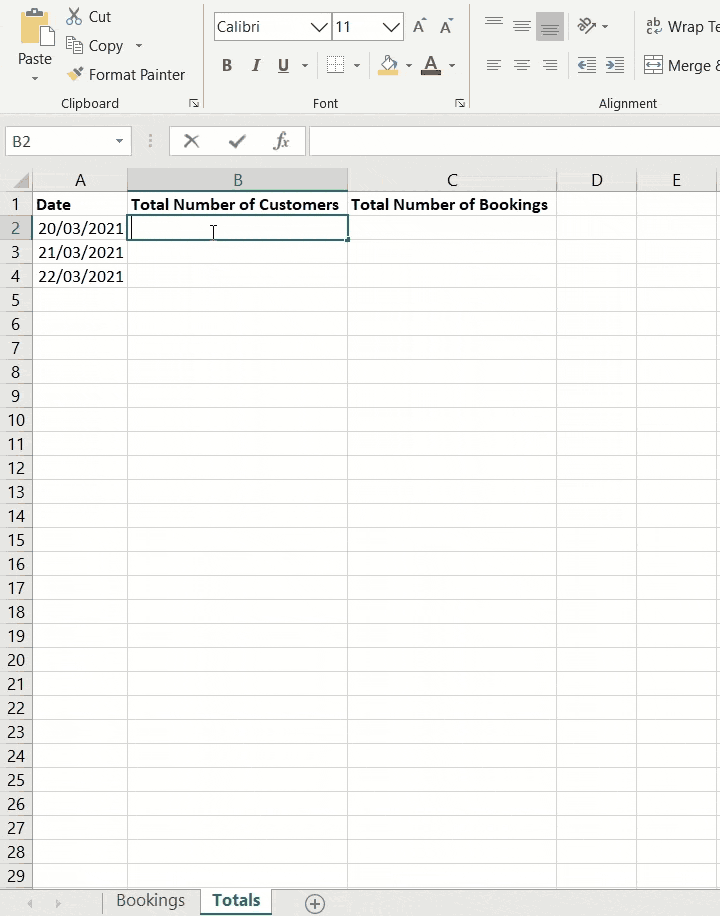
=SUMIF(Bookings!D:D,Totals!A2,Bookings!C:C)
Let’s look at what this SUMIF is doing. We’re trying to add up the total number of customers arriving on certain days and the SUMIF allows us to do that. First, we need to write =SUMIF( in Cell B2, just under the appropriate heading ‘Total Number of Customers’, then go to the Worksheet/Tab that contains the list of all your bookings (in this example, the Worksheet/Tab has been named ‘Bookings’) and select the ‘range’, which means highlighting a single Column, a single Row, or a specific range of Cells that contains the information you want to search and match, then type a comma. So, for this example, in the ‘Bookings’ Worksheet/Tab we’re selecting Column D as it contains all the date information for each booking.
Your Formula should now look like this: =SUMIF(Bookings!D:D,
Next you’ll select the ‘criteria’, which in this example will be the first date in Cell A2 of the ‘Totals’ Worksheet/Tab, then type a comma.
Your Formula should now look like this: =SUMIF(Bookings!D:D,Totals!A2,
Finally, we need to go to the Worksheet/Tab that contains the list of all your bookings and select the ‘sum_range’, which means highlighting a single Column, a single Row, or a specific range of Cells containing numeric data that you want to add up and calculate a total value for. So for this example, in the ‘Bookings’ Worksheet/Tab we’re selecting Column C as it contains all the party size information for each booking. Once you’ve selected the ‘sum_range’ you can just hit Enter on your keyboard. The SUMIF will then use the details you’ve selected and input to go and find the data you wanted and calculate the total value.
Your finished Formula should now look like this: =SUMIF(Bookings!D:D,Totals!A2,Bookings!C:C)
As shown in the image above, once you’ve written this SUMIF you can locate the Fill Handle in the bottom right corner of the Cell (in this example, the Cell is B2) and drag the handle down to the bottom of your list. The SUMIF Formula will change for each Cell and calculate the total number of customers due to arrive for each date.
Back to Top
COUNTIF
You may find that you need to count how many times a certain value appears in a Column, Row or specific Cells. For example, imagine you own a restaurant and you have a list of all your bookings. Each row of the list relates to a booking and contains customer contact details, party size, date and time the table is booked for, and allergy/dietary requirements. Now, if you wanted to count how many bookings have been made for certain days you can use a COUNTIF like this:

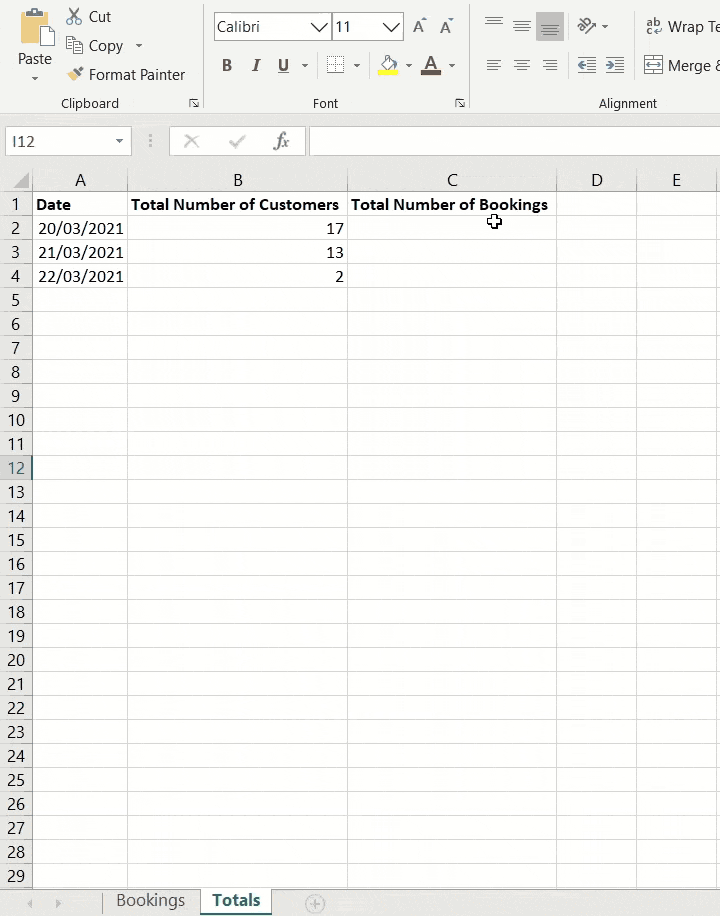
=COUNTIF(Bookings!D:D,Totals!A2)
Let’s look at what this COUNTIF is doing. We’re trying to count how many bookings have been made for certain days and the COUNTIF will work that out for us. First, we need to write =COUNTIF( in Cell C2, under the heading ‘Total Number of Bookings’, then go to the Worksheet/Tab that contains the list of all your bookings (in this example, the Worksheet/Tab has been named ‘Bookings’) and select the ‘range’, which means highlighting a single Column, a single Row, or a specific range of Cells that contains information you want to search and match, then type a comma.
So, for this example, in the ‘Bookings’ Worksheet/Tab we’re selecting Column D as it contains all the date information for each booking.
Your Formula should now look like this: =COUNTIF(Bookings!D:D,
Finally, you’ll select the ‘criteria’ which in this example will be the first date in Cell A2 of the ‘Totals’ Worksheet/Tab. Once you’ve selected the ‘criteria’ you can just hit Enter on your keyboard and the COUNTIF will use the details you’ve selected and input to go and find the data you wanted and count how many times the data can be found.
Your finished Formula should now look like this: =COUNTIF(Bookings!D:D,Totals!A2)
As shown in the image above, once you’ve written this COUNTIF you can locate the Fill Handle in the bottom right corner of the Cell (in this example, the Cell is C2) and drag the handle down to the bottom of your list. The COUNTIF Formula will then change for each Cell and count the total number of bookings due to arrive for each date.
Back to Top
Charts and Graphs
Excel Charts and Graphs can be really useful to visualise data and give a clearer picture of what the data can tell you.
Looking at numerous Columns and Rows full of various information can be a bit hard on your eyes and in some cases it just looks meaningless. This is where Charts and Graphs can help by showing the data in a different way, which may result in you spotting some sort of trend or pattern.
To create a Chart or Graph in Excel you’ll first need some data. Following on from the examples above, we have some data relating to restaurant customer numbers and booking numbers for certain dates.
Excel is smart, so if you highlight cells which contain things like a series of dates, headings and data you can go to the ‘Insert’ section, which is located towards the top-left of your screen, and select ‘Recommended Charts’. This will then present you with some appropriate charts and graphs, like so:

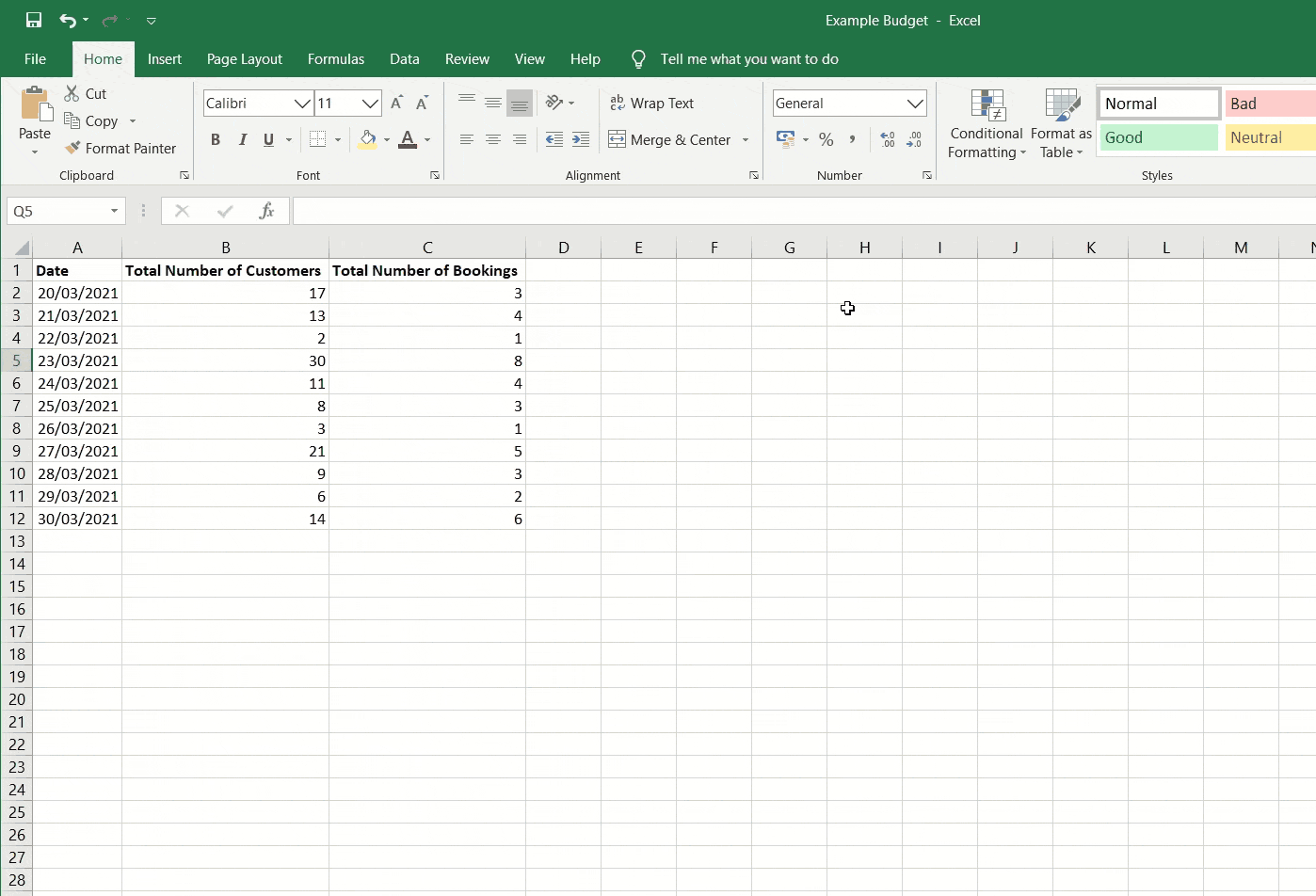
Before we end, let’s give you another practical example of how Excel could be used based on what we’ve already covered.
Back to Top
Using Excel to Create a Budget Sheet
We’ve mentioned budgets earlier in the guide, but now let’s look at how Excel can be used to create a budget. We’ll start by opening a blank workbook in Excel and then begin writing some appropriate headings (e.g. Outgoings, Name, Category, Months).

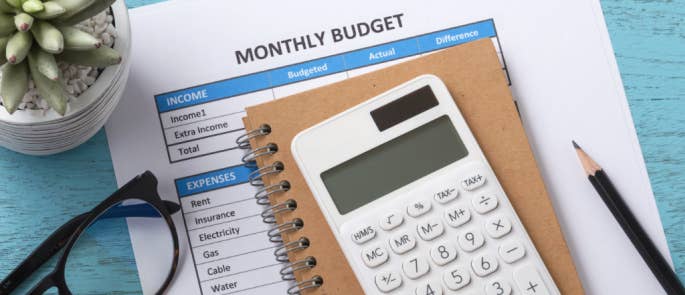
A first tip to make a note of is if you’re entering information like dates or months into Excel, it is smart enough to recognise what you’re trying to do. If you locate the Fill Handle in the bottom right corner of the Cell that you entered the first date/month in and drag up/down/sideways as demonstrated below, it will automatically input the next dates/months into the Cells you drag the handle over.
For example, here we’ve entered ‘Jan’ into Cell D2 and then dragged the Fill Handle across to the right all the way to Cell O2. Once we’ve finished dragging the handle across, the month names appear in the Cells.

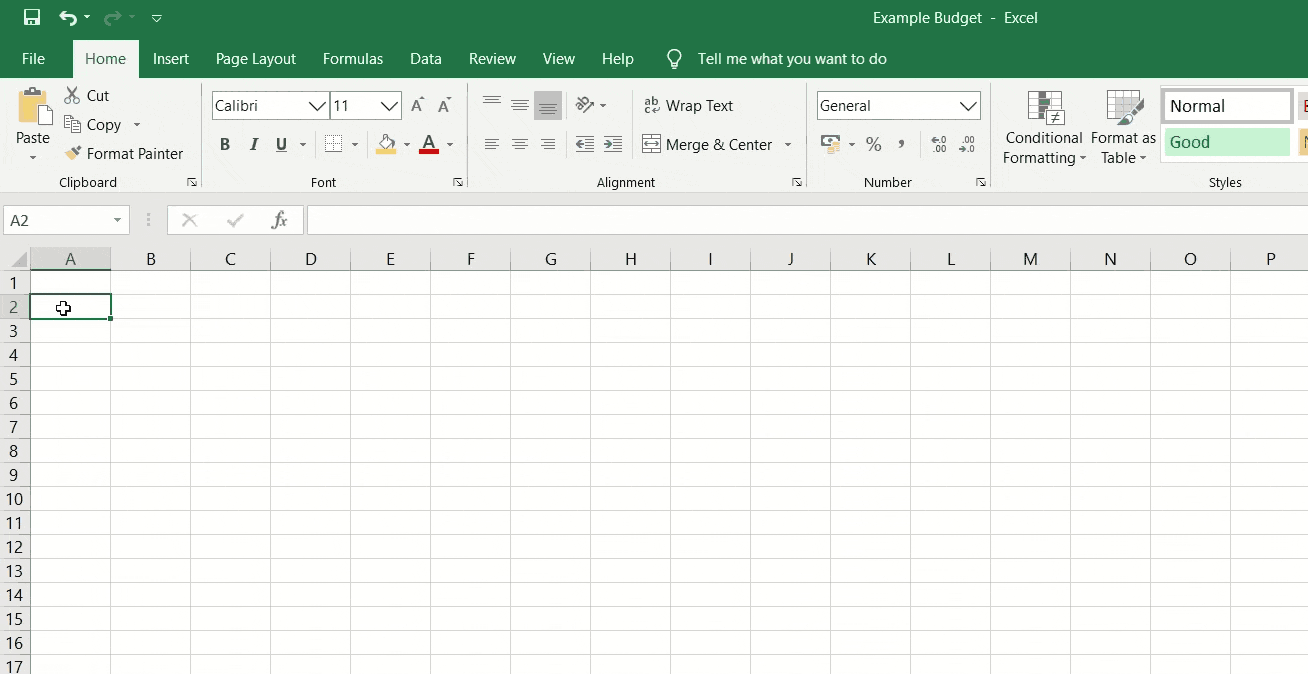
Continue to enter appropriate headings both across Columns and Rows, then enter the names and categories for each item of your budget into the relevant Cells. For example, imagine you own a restaurant and you’re trying to create a budget which details outgoing spend and incoming revenue. The names and categories for each budget item might look something like this:

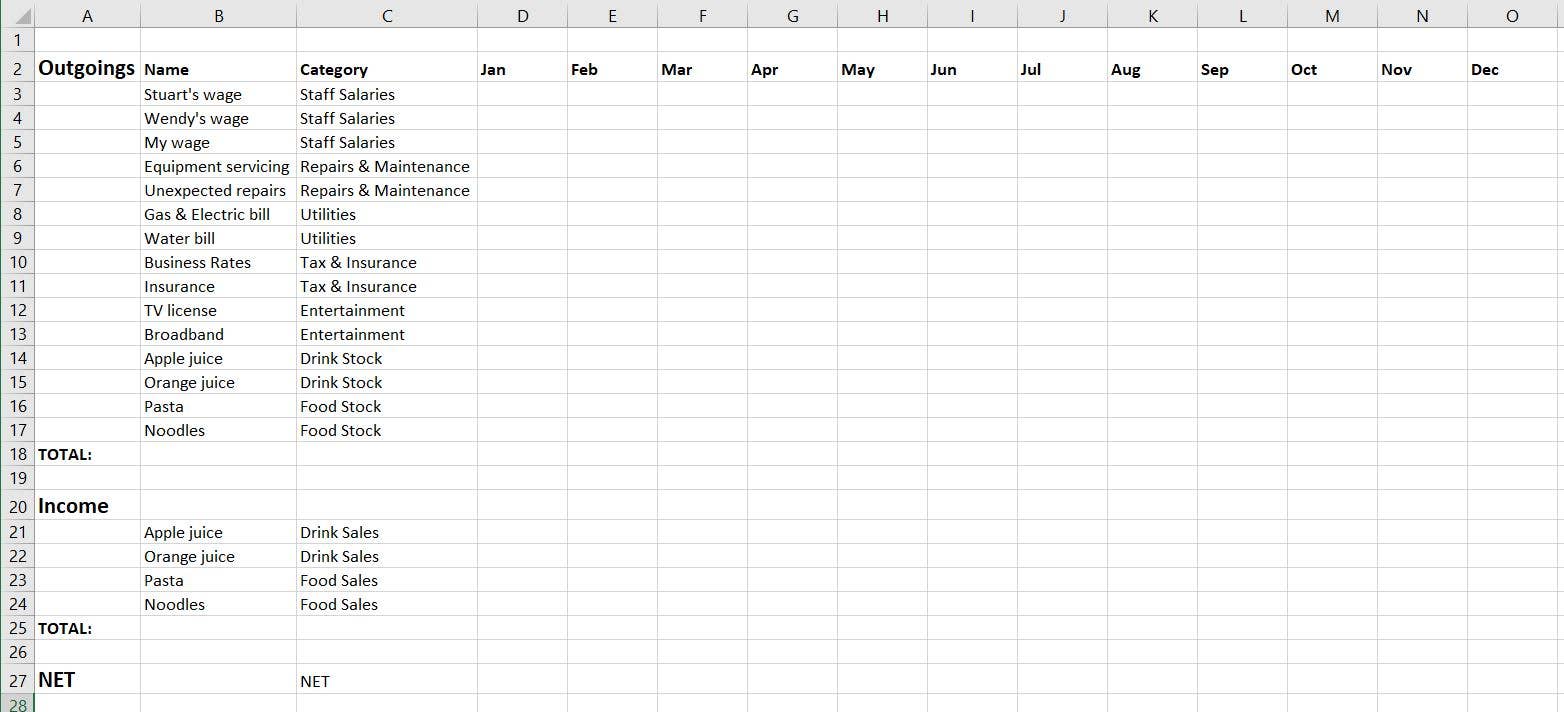
This details outgoings such as staff salaries, repair costs, utility bills and food/drink stock, as well as listing income such as food/drink sales.
Next, we can start entering financial values for each budget item and month. These figures may be based on previous accounts you’ve kept or they may be based on your best guess and available information. Now that you’ve entered those figures, it is best to format them so they are presented as currency.
To do this, simply highlight all the Cells you’ll be using to store or calculate financial values and then right-click. A menu of options will appear and here you need to select ‘Format Cells’. Another set of options will then appear and in here you just need to select ‘Currency’. If the ‘Symbol’ is not set to the currency you need, you can click on it and choose from a list of different currencies. Finally if you want to display negative numbers differently, there are a few options available.
Once you’re happy with your selections, click OK and the numeric values in the Cells you highlighted will change to present as currency, like so:

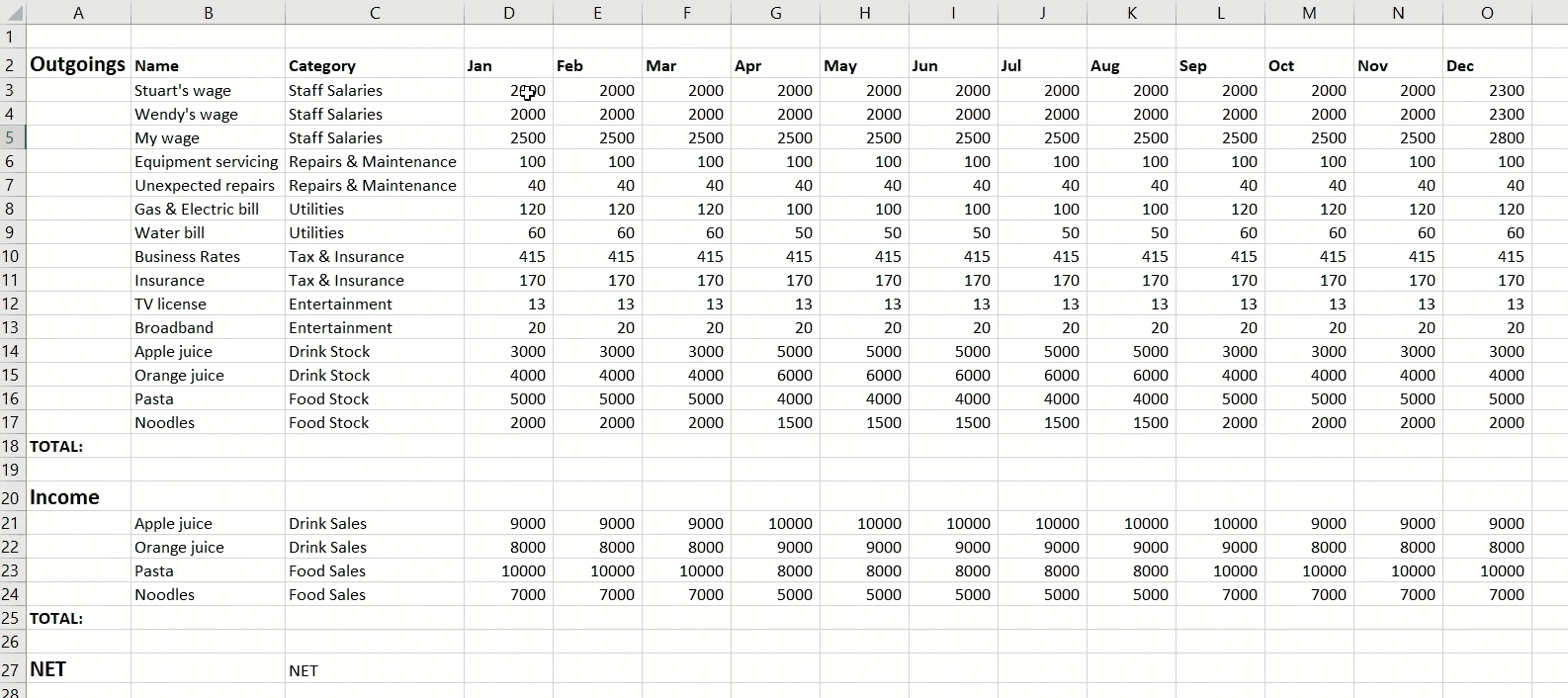
Now that you’ve entered and formatted the financial details for all your budget items, you can use the SUM Function to create a Formula that will calculate the monthly total for all your outgoings, like so:

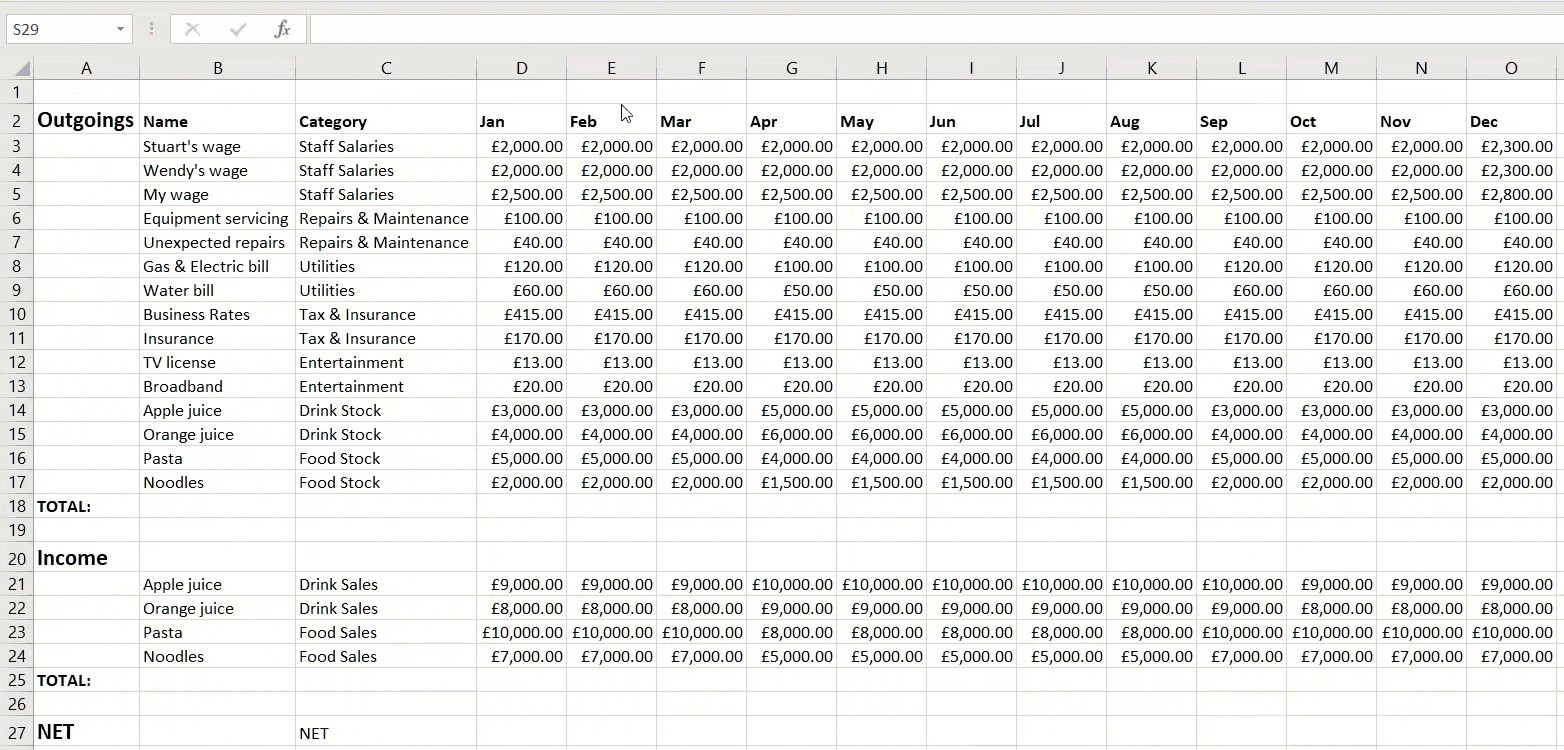
Here you can see that instead of selecting a whole Column, the SUM is being calculated for certain Cells, and then by using the Fill Handle the Formula is repeated and used to work out the total outgoing for each month. You can then create a similar calculation to work out the total income for each month.
Finally, we can work out the Net amount for each month by writing a simple Formula to subtract the monthly outgoings total from the monthly income total, like this:

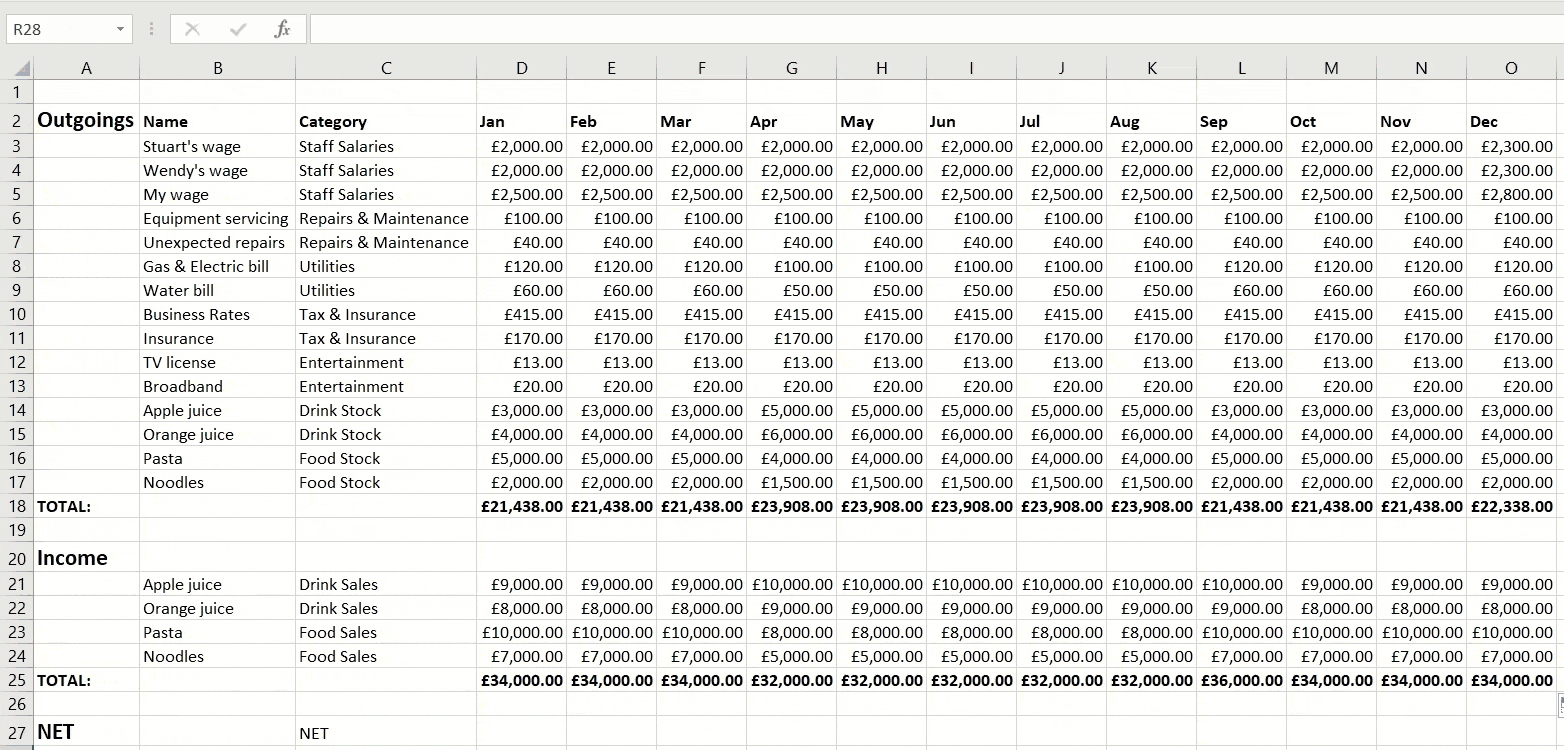
And there you have it – a simple budget using a combination of SUM and basic Formulas. You could take this further and apply what you’ve learned about SUMIF to work out which category of your budget costs the most in December and which category of your budget generates the most income in December. You could even make a Chart or Graph of your findings. Give it a try and good luck.
Back to Top
What’s next?
Once you fully understand these Excel basics, the next step would be to grow your Excel knowledge further by researching Pivot Tables, Data Validation and Functions like IF, SUMIFS and COUNTIFS. You can find all sorts of guides online by searching on Google or YouTube. Watch this space too, as we’re always releasing new guides on all sorts of topics to help you with your personal and professional growth.
Further Resources:















![Toni Kroos là ai? [ sự thật về tiểu sử đầy đủ Toni Kroos ]](https://evbn.org/wp-content/uploads/New-Project-6635-1671934592.jpg)


